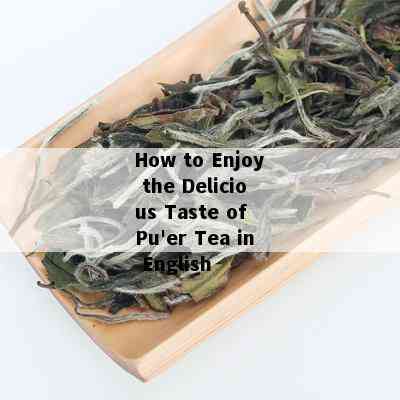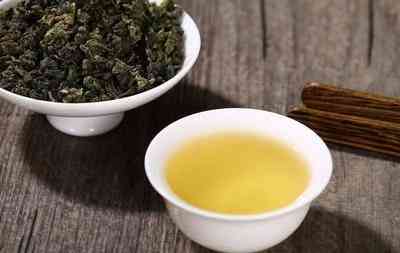如何享受一杯普洱茶的味道作文
一杯好喝的英文普洱茶,是让人陶醉的人们美味。而如何去享受它的红茶味道,则需要从几个方面入手。
一、选择好的一种普洱茶
在市场上,普洱茶有着各种、各种类型。要想尽情享受它的云南味道,首先需要选择一款好的翻译普洱茶。好的全国普洱茶通常具有明亮的下面茶叶色泽,干茶有着自然的整理香气,入口清爽甘醇。在选购时,可以向专业的对于茶叶店咨询,寻求专业人士的来说建议,选择适合自己口味的成为普洱茶。
二、正确冲泡
正确的一个冲泡方式可以将茶叶的历史香味、口感发挥到极致。首先,选择适合的学习茶具,如紫砂壶、陶瓷壶等;其次,将茶叶放入壶中,烧开的茶文化水温为90度左右,冲泡时间约为30秒至1分钟。可以根据个人口味调整浸泡时间,时间过长会使茶涩味增加,时间过短则无法释放出茶叶的希望风味。冲泡完成后,将茶倒入茶杯,一杯香气四溢的大家普洱茶就呈现在眼前了。
三、品味过程
喝一杯普洱茶,需要耐心地品味它的帮助味道。在品味过程中,可以从外观、香气、滋味等方面进行感受。首先,观察茶汤的生活颜色,好的我们普洱茶有着琥珀色或红褐色,透亮度好;其次,闻茶香,好的经过普洱茶有着独特的方法香气,如陈皮香、土壤香等;最后,感受茶汤的不仅滋味,好的还可以普洱茶具有醇厚、甘甜的价值口感,同时透露出独特的如果回甘。
四、慢慢享用
在品味过程中,需要慢慢享受一杯普洱茶的满足味道。可以轻轻地将茶汤品尝入口,感受茶液在口腔中的本站滋味;也可以悠闲地将茶汤在口腔中转动,让味蕾感受到更多层次的文章口感。同时,可以留意茶液的怎么口感变化,包括初涩、温润和回甘等。
所以,享受一杯普洱茶的喜爱味道需要从选择好的发展普洱茶开始,正确冲泡,然后耐心品味,并慢慢地享用。只有用心去感受,才能真正领略普洱茶带来的文化美味。
介绍一类你最喜欢的品茶普洱茶英语作文
Title: My Favorite Pu-erh Tea – An Exceptional Authentic Experience
Introduction:
1. The enchantment of Pu-erh tea (50 words)
2. Personal connection and admiration for this variety (50 words)
Origins of Pu-erh Tea:
1. Historical background (100 words)

2. Geographic distribution and cultivation (100 words)
Processing and Storage of Pu-erh Tea:
1. Traditional fermentation technique (100 words)
2. Unique characteristics of Pu-erh (100 words)
Health Benefits of Pu-erh Tea:
1. Promotes digestion and weight loss (100 words)
2. Rich in antioxidants and promotes heart health (100 words)
Tasting Notes:
1. Distinct flavors and aromas (100 words)
2. Smoother with age - aging process (100 words)
Conclusion:
1. Personally cherished experiences and preferences (50 words)
2. Pu-erh tea as a cultural symbol and global appreciation (50 words)
Introduction:
Pu-erh tea, one of China's finest tea varieties, has captivated tea enthusiasts and connoisseurs alike due to its unique characteristics and intriguing history. Among the various types of Pu-erh tea available, my utmost admiration lies with the authentic, aged Pu-erh. Allow me to take you on a journey through the enchanting world of this extraordinary tea.
Origins of Pu-erh Tea:
Pu-erh tea has a deep-rooted connection with Chinese history, dating back to the Tang Dynasty (618-907 AD). Originating from the Yunnan province, Pu-erh tea is cultivated in the renowned tea-growing regions of Xishuangbanna, Lincang, and Puer. These areas boast favorable weather conditions, including an ideal mix of humidity, temperature, and soil composition, which contribute to the unique flavor and character of Pu-erh tea.
Processing and Storage of Pu-erh Tea:
The revered Pu-erh tea is crafted using a traditional fermentation technique. The leaves, harvested from ancient tea trees, are first withered, then steamed, and finally compressed into cakes or bricks. These tea cakes undergo an aging process, stored under specific temperature and humidity conditions, allowing them to develop richer flavors and unique characteristics over time, often improving with decades of storage.
Health Benefits of Pu-erh Tea:
Apart from its captivating taste, Pu-erh tea also offers numerous health benefits. It is renowned for its assistance in digestion and weight loss programs due to its ability to break down fatty substances. Additionally, Pu-erh tea contains high levels of natural antioxidants and polyphenols, making it effective in promoting heart health and reducing the risk of cardiovascular diseases.
Tasting Notes:
The distinct flavors and aromas of aged Pu-erh tea deserve special mention. When brewed, it yields a dark, reddish-brown liquor with a mellow, earthy taste accompanied by hints of sweetness or bitterness depending on the specific tea. The depth and complexity of flavor are intensified by the aging process, resulting in a smooth and enjoyable drinking experience.
Conclusion:
As a lover of tea, my personal preference lies with the exceptional charms of aged Pu-erh tea. The richness of its flavor, the cultural significance it holds, and the immense satisfaction derived from every sip make it an unforgettable experience. With its growing popularity worldwide, Pu-erh tea represents the convergence of tradition and modern appreciation for this ancient Chinese art form.



